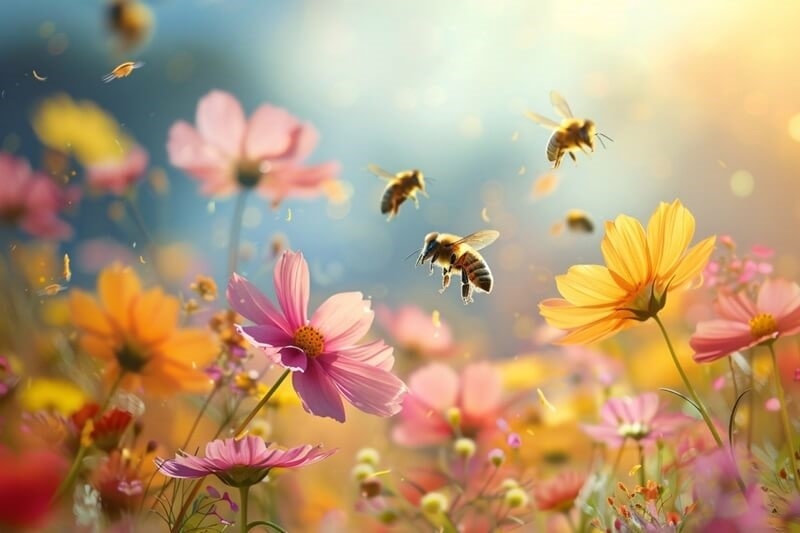
A summer garden that stays vibrant from June to September isn’t just about pretty petals and perfect sunshine. It takes intention, a little strategy, and consistent care. If your flower beds usually start strong and fizzle by mid-July, it’s time to shift your game. This isn’t just another fluff piece. We’re getting into the real stuff—from choosing the best flowers for a summer garden to mastering how to keep flowers blooming all summer, and making sure each one lasts longer than your patience with wilting leaves.
Let’s dig in—literally.
You can't expect a full summer show with a half-hearted cast. The best flowers for a summer garden are the ones built to handle the heat, humidity, and long days without collapsing like a bad umbrella.
Start with these reliable bloomers:
They don’t just survive summer—they own it. These flowers know how to stay upright when the sun gets ruthless. Most of them are drought-tolerant, mildew-resistant, and bloom-happy until early fall. Keep your palette varied, but your strategy focused: bold blooms, different heights, and continuous flowering.

Designing a garden that stays alive—not just aesthetically, but actually thriving—starts with structure. Borrow Christine Covino’s container planting trio: thrillers, fillers, spillers. It applies to raised beds and garden plots too.
This setup not only adds texture and dimension, but also keeps things blooming evenly. No awkward gaps or dead zones.
More to Discover: Indoor Succulent Plants: Types, Care and Planters Guide
This isn’t a plant-and-pray kind of situation. If you want to keep flowers blooming all summer, you need to show up—consistently.
Water in the morning, when the sun's not blazing. This helps the roots absorb moisture before heat kicks in, and avoids fungal issues. Forget watering the leaves—soak the soil directly. Use a soaker hose or drip irrigation if you’re serious about results.
During a heatwave? Check soil moisture daily. Use your fingers. If it feels dry 2-3 inches down, it’s time to water. If you’re using containers, expect to water them more often. Terracotta pots especially dry out fast.
Spacing is everything. Too close, and your flowers compete for nutrients and airflow, leading to stress and disease. Around 6 inches between plants is usually a safe bet—adjust based on plant variety. Better spacing equals better blooming.
You don’t need fancy formulas. But you do need to feed your plants regularly if you’re aiming to make flowers bloom longer.
Flowers that are well-fed don’t just last longer—they bloom harder. You’ll literally see the difference in color saturation and quantity.
If you’re not removing spent blooms, you’re basically telling your flowers the season is over. Cut off fading flowers so the plant channels energy into fresh growth, not seed-making.
Check your garden every 2-3 days and snip where necessary. It’s a tiny chore with massive impact. Yes, it’s that simple
Summer isn’t static. Your garden care shouldn’t be either. Knowing how to care for flowers in summer means being flexible.
Observation is your best friend. If something looks off, adjust quickly. Summer doesn’t wait.
Aphids, spider mites, and fungus gnats love summer as much as your flowers do. Beat them without going nuclear:
Early detection makes the difference between a small nuisance and a full-blown infestation.
Once you learn how to make flowers bloom longer, you’ll start planning smarter. Stagger plantings every few weeks to keep a fresh round of blooms coming in.
Succession planting = no dull gaps = Instagram-worthy garden well into September.
And if your early bloomers are fading by late July? Have backup plants ready. Replace and refresh. That’s the real secret to keeping flowers blooming all summer.
Here’s your quick-hit checklist for all-season success:
Each of these actions feeds directly into bloom health and longevity. Ignore one for too long, and the whole system starts to wobble.
Want to make flowers bloom longer? Cut them. Seriously. The more you trim, the more they produce. Use clean shears, cut early morning, and don’t be afraid to harvest often.
It’s not just good for your vases. It’s good for the plants. Flowers exist to reproduce. Take away their blooms, and they’ll make more.
Explore More: Learn How to Start an Indoor Flower Pot Garden Easily
If you want to keep flowers blooming all summer, treat your garden like a living system—because it is. There’s no one-size-fits-all formula. It’s about responding to your space, your climate, and your plants in real time.
There’s effort involved, yes. But the payoff? A garden that doesn’t just survive the summer—it dominates it.
Now grab your gloves. You’ve got flowers to feed.
This content was created by AI